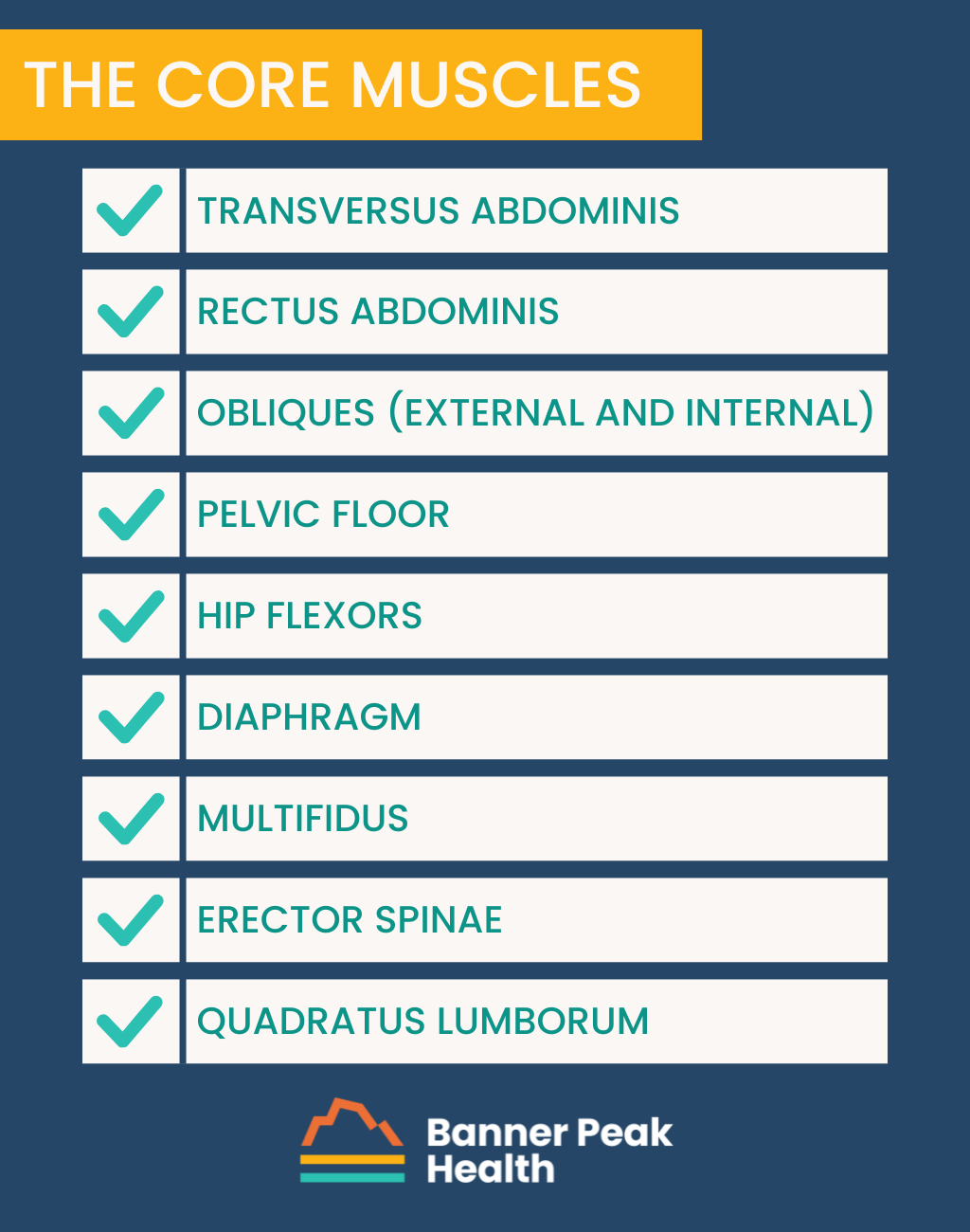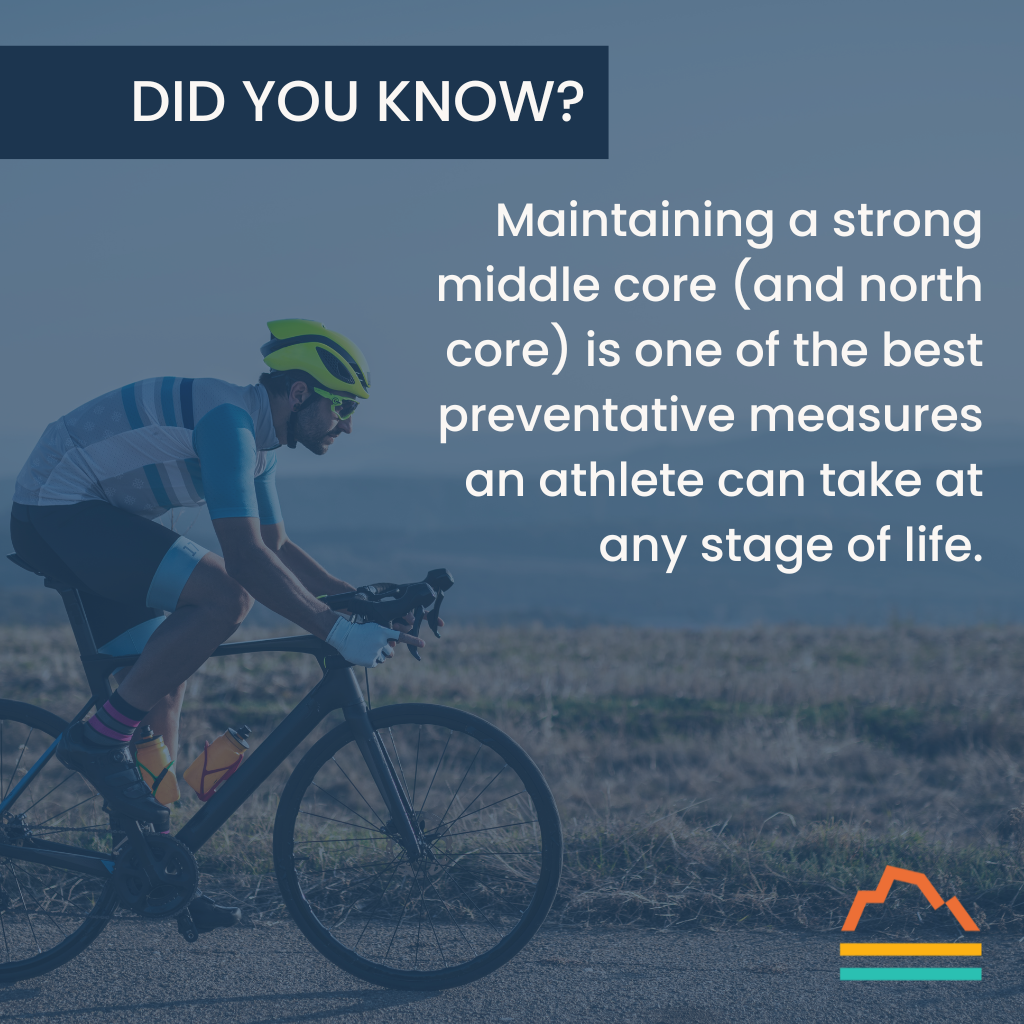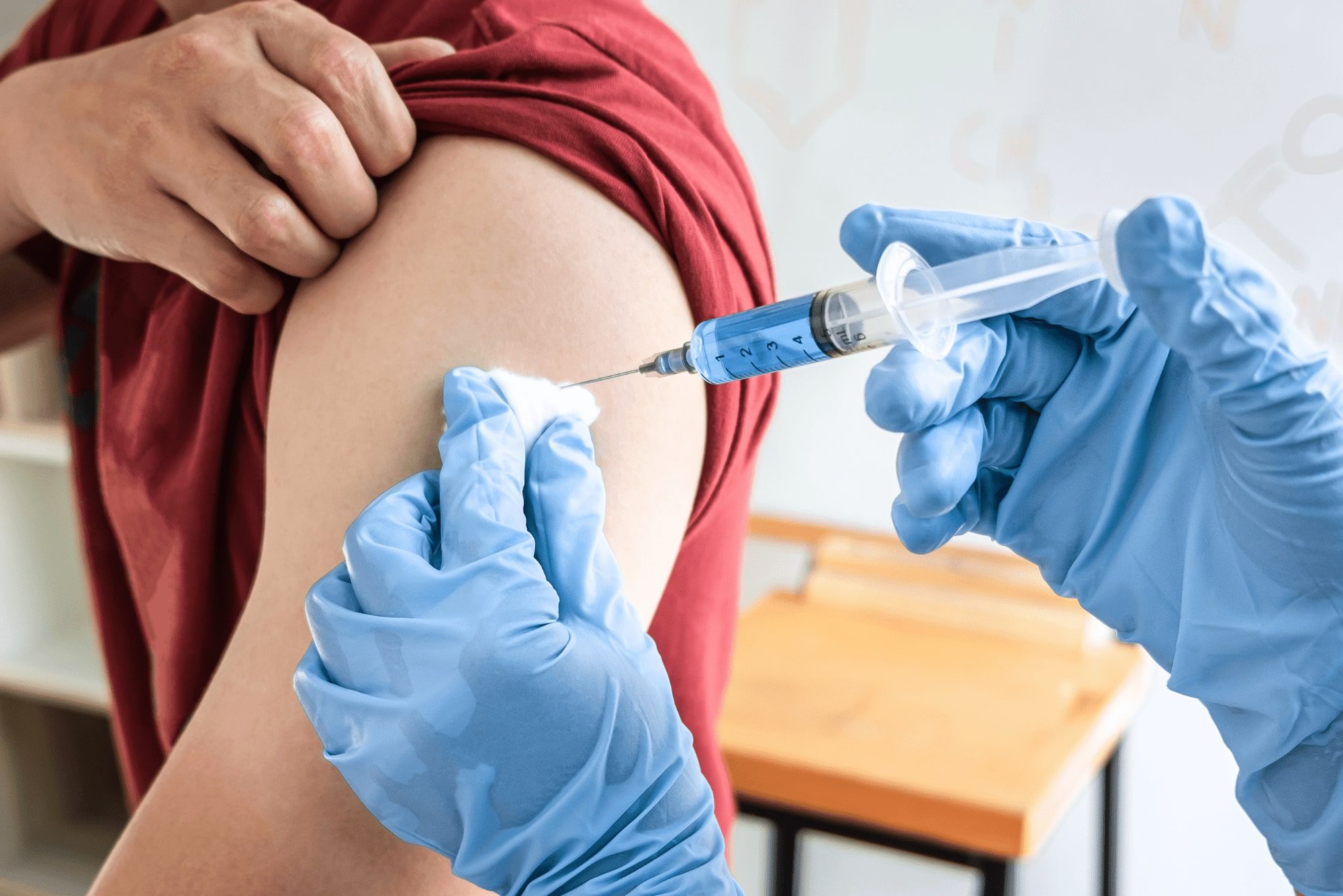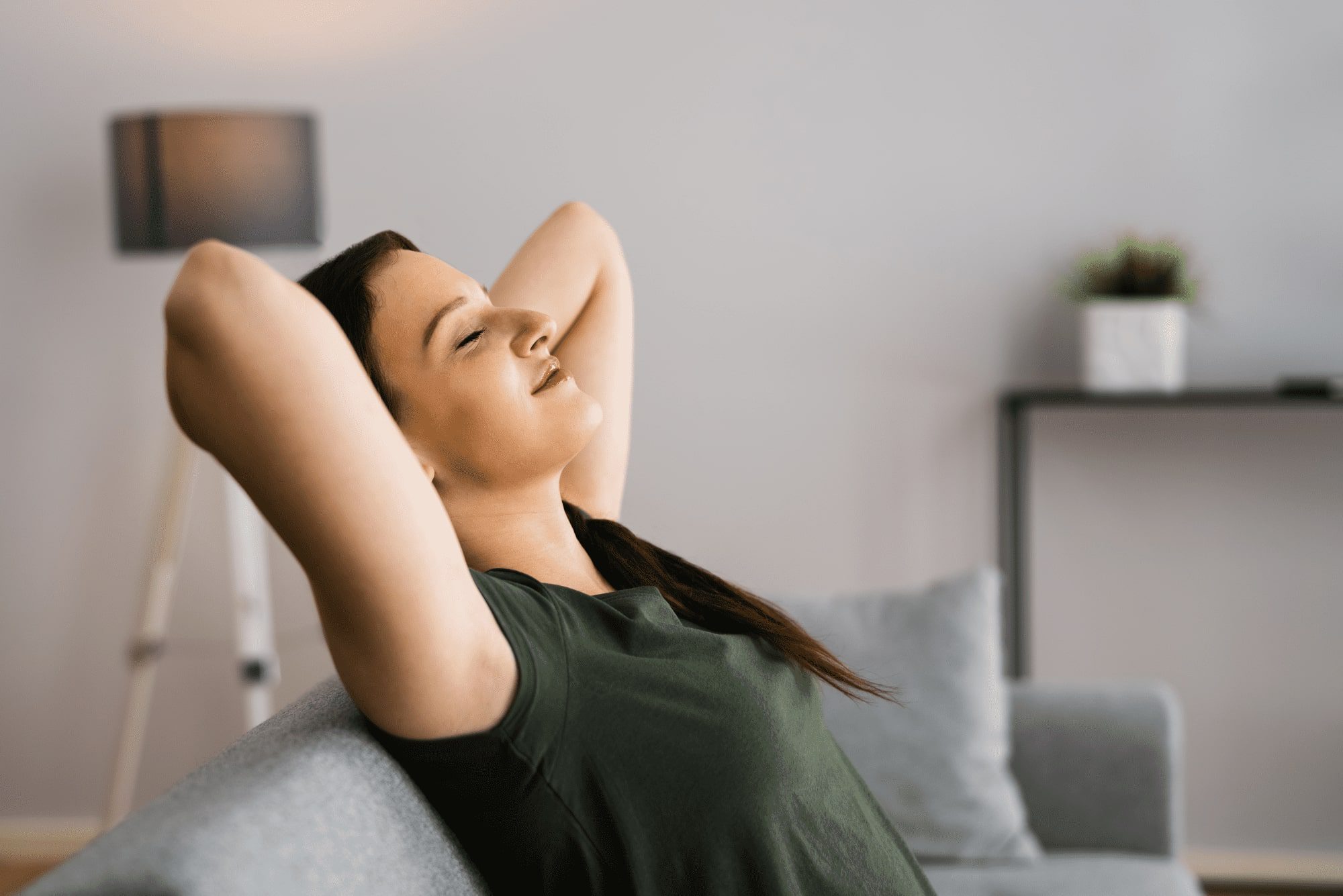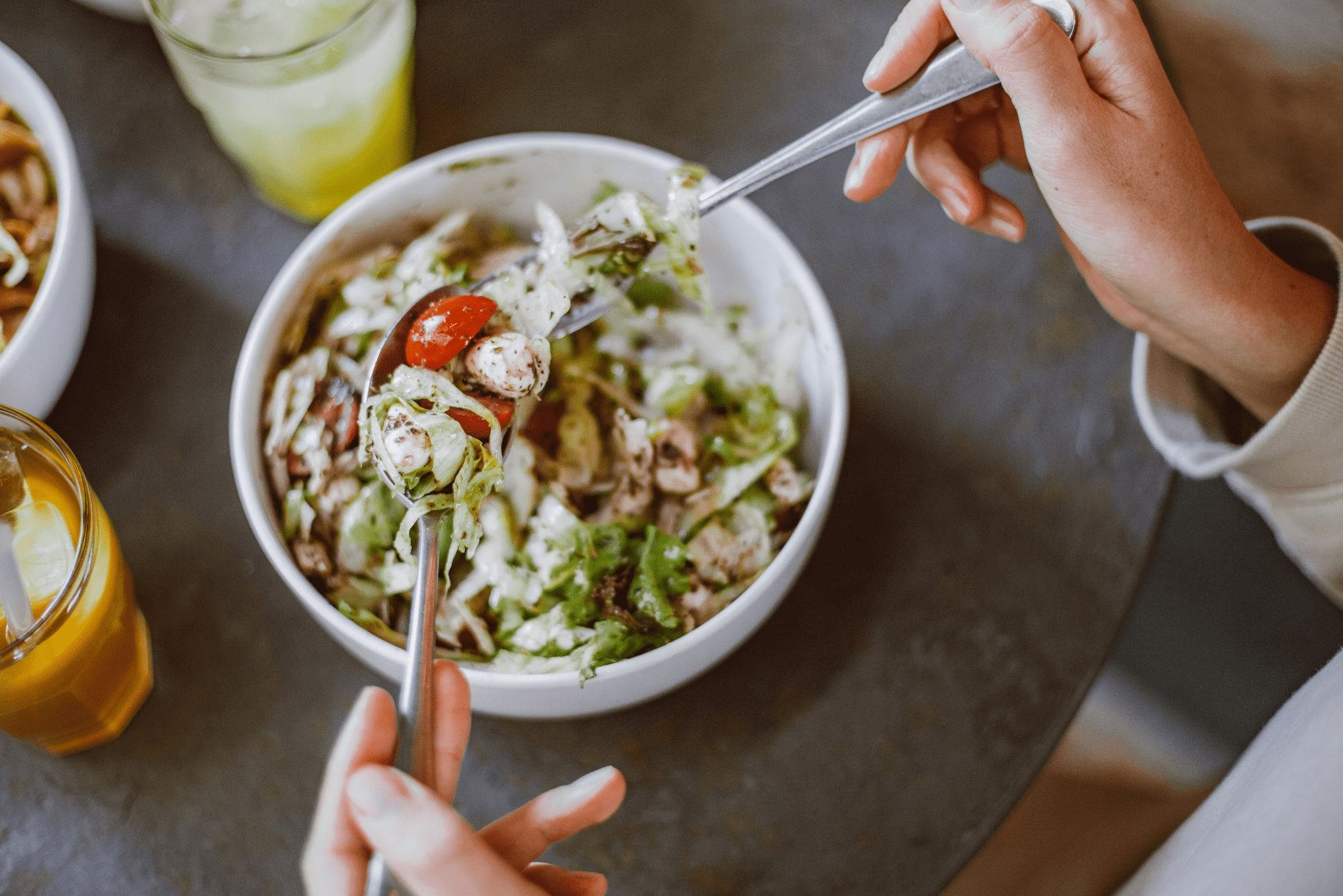Core strength is essential to almost all athletic performance.
In nearly all sports, the force generated from a limb (like an arm or leg) must be anchored by a strong trunk — the core. Otherwise, the force is severely diminished.
Imagine throwing a football while you’re floating in an inner tube. Now imagine throwing a football while standing firmly on the ground. The latter football will cover much more distance than the former.
But what are the core muscles? How can we as athletes improve our core strength, especially core strength for cycling? Read on to find out.
What Are the Core Muscles?
The core muscles are a system of muscles covering the pelvis, lower back, hips, and stomach.
Some have names you’ll recognize, like the gluteus maximus, while others are more obscure, like the external obliques or multifidus. Regardless of popularity, they all work together to get the job done, whether that job be teeing off successfully or throwing a football across a field.
How the Core Muscles Work
Each myocyte (muscle cell) contains countless layers of two overlapping molecules: actin and myosin. Biochemical reactions between these two molecules cause the cell to contract. The combined force of these myocytes creates the strength of a muscle. Thus, the more groups of muscles that create a movement, the stronger the force of the movement will be.
Golf illustrates this principle perfectly.
Many golfers believe the force behind their swing is determined solely by the mass of their arms or pelvis. They have no idea the vital role core strength plays in golf — though having a six-pack may not help your putting stroke.
The same is true in swimming. Your core anchors your arms and legs as you kick, reach, and pull. All those muscles working together generate tremendous power.
Tennis is another great example. When you watch players run across the court, serve, and hit backhand and forehand shots with incredible force, know it’s due to the engagement of their core.
But a favorite and personal example of the core’s influence is cycling.
Core Strength for Cycling: My Personal Experience
When it comes to cycling, core strength is particularly important. The core anchors the pelvis to generate the power the legs need to pump the pedals. It also keeps the torso angled forward for wind resistance.
I started cycling when I was 12, nearly 50 years ago. By age 30, I’d realized the truth behind the adage, “You have to give to your body to receive from your body.” At that point, I’d developed a workout regimen to help me maintain core strength for cycling.
Over the decades, as I’ve changed and as technology has changed, my regimen has evolved.
In my 20s, I did the sit-ups we all learned in gym class — the ones where you touch your elbow to the opposite knee. However, we now know that those sit-ups cause hyperflexion in the lumbar spine, which increases the risk of lower back injury and pain.
Now, I maintain my core strength for cycling through static planking maneuvers, and I’m proud to say I’ve never had any back problems in my nearly 50 years of riding.
Ironically, I did suffer neck pain associated with cycling several years ago. It turned out that I’d neglected my “north core” — the muscles that stabilize the shoulder girdle, upper back, and neck.
I’ve since expanded my workout regimen to address these muscles and have been able to cycle painlessly.
My advice to all athletes — cyclists in particular — is to be diligent and invest in your core strength, both of the middle core and the north core.
There are several ways to achieve this. You can seek out fitness instructors, physical therapists, Pilates classes, online videos, yoga classes, or books.
The avenues are virtually limitless, so find the one that’s best for you and stick with it. You’ll never find a better investment in athletics — and you’ll never regret it.
The Dangers of Overlooking Your Core
Maintaining your core is both offensive and defensive. Core strength training allows you to stay on the bike longer, hit the golf ball farther, etc., but it also prevents injury, especially in aging athletes.
As I’ve said before, an injured athlete is not a training athlete. Time off to recover takes you out of the game.
Maintaining a strong middle core (and north core) is one of the best preventative measures an athlete can take at any stage of life.
Today’s Takeaways
If Pilates isn’t for you, rest assured there are many ways to build core strength for cycling, golf, tennis, and other sports.
Pick the right avenue for you and stay with it. You’ll be glad you did.

Barry Rotman, MD
For over 30 years in medicine, Dr. Rotman has dedicated himself to excellence. With patients’ health as his top priority, he opened his own concierge medical practice in 2007 to practice medicine in a way that lets him truly serve their best interests.
